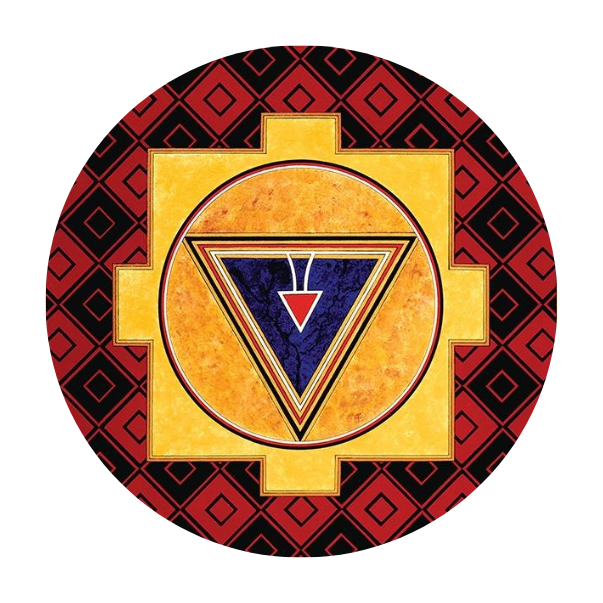theory course
Basics of
Tantra & Yoga
Philosophy and Practice
Tantra & Yoga
Philosophy and Practice
Theoretical base and extension of Kriya Raja Yoga course with Max online. Major ideas, concepts and practical approaches in various schools of Tantra and Yoga of the Indian Subcontinent and beyond. Their development and usage from historical times to nowadays. Practical philosophy with open and secret techniques.
Lesson-3
Development of Tantra in India

Major Concepts of Tantra
Main concept is that Macrocosm is similar to Microcosm. It is made of same elements and governed by the same laws. So in Tantra we study the Universal from the point of view of the individual - macrocosm through microcosm. We can start with ourself and ascend in stages through man-world-cosmos and reaching in this process the Ultimate reality as an ultimate goal.
There is a central concept that Reality is unity, an inseparable whole. It is called Siva-Sakti (pronounced Shiva-Shakti). Siva is Cosmic Consciousness and Sakti its creative power, its energy. They cannot be differentiated one from another and only on our relative plane and dual world that we look at them as separate entities.
Tantra has many similar ideas and is connected to Sankhya Philosophy, though they have some differences too.
According to Tantra all manifestation in this world is based on this fundamental dualism of Siva-Sakti or male principle known as Purusha (Cosmic Consciousness) of Sankhya or Brahman of Vedanta and female principle of Prakriti (Cosmic Force of Nature) of Sankhya or Maya of Vedanta.
Siva - Cosmic Consciousness is static and on transcendental level is one and undifferentiated.
Sakti - Kinetic Energy (Prakriti, Nature) out of which the world is born.
Siva and Sakti are 2 aspects of one principle. In reality, the whole world is a game of polarities Siva-Sakti, Purusha and Prakriti, Male and Female. Tanta’s goal is to achieve this integration of polarities, to experience unity and to feel ecstatic joy in such unity - ananda.
There are also important concepts of Tattvas - levels of creation. 36 tattvas.
Theory of Gunas - 3 main forces or bricks of Nature: Sattva, Rajas, Tamas.
Tantra has been developing together with main sciences in India. Often tantric yogis and masters were at the same time Ayurvedic doctors, Jyoti astrologers, alchemists or Sanskrit grammarians.
Tantric ideas about time and space, the nature of light and heat, gravity and magnetic attraction, the theory of vibration, wave theory of sound are very modern and correspond with the ideas of modern physics and other sciences. In many ways Tantra is anti-religious and anti-dogmatic.
Spanda is an important theory of vibration with its frequencies.
3+1 states of consciousness
Jagrata (wakefulness)
Svapna (dream)
Susupti (deep sleep)
Turaya - silence (a state beyond)
One of the important discoveries of Tantra are energy centres in our body and subtle anatomy in general. The theory of Chakras and practices connected to them are purely of Tantric origin.
Concept of Prana and Nadis, concept of Kundalini Shakti are crucial for our yogic practices. Tantra always has viewed our sexual energy as a fuel and a great source of energy for higher practices of yoga.
Main principle of Tantra - Transformation
Main methods of Tantra:
Main concept is that Macrocosm is similar to Microcosm. It is made of same elements and governed by the same laws. So in Tantra we study the Universal from the point of view of the individual - macrocosm through microcosm. We can start with ourself and ascend in stages through man-world-cosmos and reaching in this process the Ultimate reality as an ultimate goal.
There is a central concept that Reality is unity, an inseparable whole. It is called Siva-Sakti (pronounced Shiva-Shakti). Siva is Cosmic Consciousness and Sakti its creative power, its energy. They cannot be differentiated one from another and only on our relative plane and dual world that we look at them as separate entities.
Tantra has many similar ideas and is connected to Sankhya Philosophy, though they have some differences too.
According to Tantra all manifestation in this world is based on this fundamental dualism of Siva-Sakti or male principle known as Purusha (Cosmic Consciousness) of Sankhya or Brahman of Vedanta and female principle of Prakriti (Cosmic Force of Nature) of Sankhya or Maya of Vedanta.
Siva - Cosmic Consciousness is static and on transcendental level is one and undifferentiated.
Sakti - Kinetic Energy (Prakriti, Nature) out of which the world is born.
Siva and Sakti are 2 aspects of one principle. In reality, the whole world is a game of polarities Siva-Sakti, Purusha and Prakriti, Male and Female. Tanta’s goal is to achieve this integration of polarities, to experience unity and to feel ecstatic joy in such unity - ananda.
There are also important concepts of Tattvas - levels of creation. 36 tattvas.
Theory of Gunas - 3 main forces or bricks of Nature: Sattva, Rajas, Tamas.
Tantra has been developing together with main sciences in India. Often tantric yogis and masters were at the same time Ayurvedic doctors, Jyoti astrologers, alchemists or Sanskrit grammarians.
Tantric ideas about time and space, the nature of light and heat, gravity and magnetic attraction, the theory of vibration, wave theory of sound are very modern and correspond with the ideas of modern physics and other sciences. In many ways Tantra is anti-religious and anti-dogmatic.
Spanda is an important theory of vibration with its frequencies.
3+1 states of consciousness
Jagrata (wakefulness)
Svapna (dream)
Susupti (deep sleep)
Turaya - silence (a state beyond)
One of the important discoveries of Tantra are energy centres in our body and subtle anatomy in general. The theory of Chakras and practices connected to them are purely of Tantric origin.
Concept of Prana and Nadis, concept of Kundalini Shakti are crucial for our yogic practices. Tantra always has viewed our sexual energy as a fuel and a great source of energy for higher practices of yoga.
Main principle of Tantra - Transformation
Main methods of Tantra:
- Mantra
- Yantra
- Chakras and Inner Potential
- Nyasa
- Tantric special Poojas and Rituals
- Yoga sadhana such as Kriya, Kundalini, Swara, Nada and Mantra yoga

In reality, the whole world is a game of polarities Siva-Sakti.
Tanta’s goal is to achieve this integration of polarities, to experience unity and to feel ecstatic joy in such unity - ananda.
Tanta’s goal is to achieve this integration of polarities, to experience unity and to feel ecstatic joy in such unity - ananda.
Schools of Tantra
2 main schools of Tantra - Saivism and Saktism
Sakta Tantra: Sakti is the main force of the Cosmos. Parama Siva or Sada Siva is a Supreme Absolute, but passive without its Sakti. Worshiping Sakti in many forms through mantra, yantra and ritual. Yoga practice - working with body energy through Prana, its energy centers and Kundalini Para-Sakti.
Saiva Tantra: The whole Universe has evolved from one singular reality - Siva. He is omnipresent and transcendental at the same time. Siva carries a 5-fold function: creation, preservation, destruction, concealment, giving grace.
There are many sects and streams inside Tantra. Also there are different approaches and modes of practice.
2 main schools of Tantra - Saivism and Saktism
Sakta Tantra: Sakti is the main force of the Cosmos. Parama Siva or Sada Siva is a Supreme Absolute, but passive without its Sakti. Worshiping Sakti in many forms through mantra, yantra and ritual. Yoga practice - working with body energy through Prana, its energy centers and Kundalini Para-Sakti.
Saiva Tantra: The whole Universe has evolved from one singular reality - Siva. He is omnipresent and transcendental at the same time. Siva carries a 5-fold function: creation, preservation, destruction, concealment, giving grace.
There are many sects and streams inside Tantra. Also there are different approaches and modes of practice.
If a building becomes architecture, then it is art
